

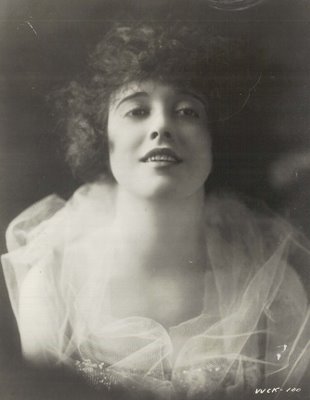
Monday Glamour Starter --- Mabel Normand

Mabel Normand’s another of those ghostly figures that inhabit (mostly) bad prints of silent era movies. She was the Queen of Keystone comedies at a time when most of the laughs arose from people getting pitchforks thrust in their rear or eyes sprayed with raw milk from a cow’s udder. Even in the face of today’s unbridled vulgarity, Sennett’s bunch could still write the book on screen scatology. Mabel truly was a rose among some pretty unsightly thorns. Her leading men actually look dirty. Their hair is always a mess and those teeth are like something inside the mouth of a shark. Interviews suggest many of them merely played themselves. Like some luckless character out of the wild west, which is really all Hollywood was in those early days, Mabel just kept adding layers of scar tissue until finally collapsing under the weight of it all. Judging by the punishment she took both on and off the screen, it’s amazing she lasted until 1930, but why did this beautiful and talented girl have to play tackle dummy for all of the movie industry’s worst excesses?
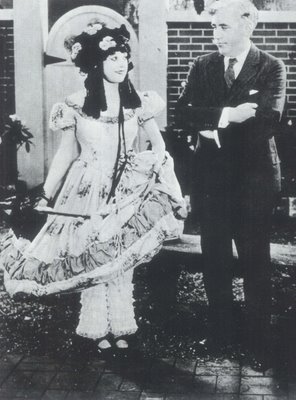
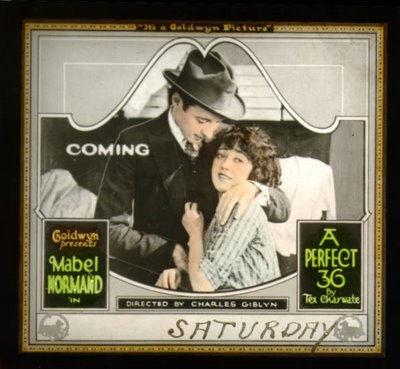
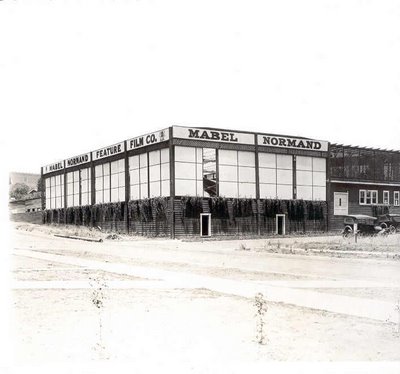
Modeling in New York led to supporting work in Biograph shorts D.W. Griffith was directing, but Mabel wasn’t the virginal type he favored; though instinctive talent was already obvious to those who cared to look. Fellow beginner Mack Sennett saw the potential, and moved her west to help launch his Keystone operation, where one-reel (or less) laffers were made largely off the cuff and future comedy stars seemed to step off each passing streetcar. Charlie Chaplin was one of these --- so was Roscoe Arbuckle. Normand teamed with each, and both benefited. She got banged around a lot, but she was young, so what the hell? They could always fix her up with a little something from the pharmacy. You had to be tough in that racket. She did 53 comedies during the first 1912-13 Sennett season, then became engaged to Mack in 1915. There was a real beauty and beast thing happening here, for this guy was no Wally Reid --- in fact, he could sometimes look positively demented on those unwelcome occasions when he stepped in front of a camera. Nuptials eve found Sennett repairing to Mae Busch’s apartment for a bracer, which was doubly ironic because it was Mabel who’d gotten the woman her studio job to start with. Mack and Mae had shucked their outer garments and initiated love’s oldest ritual when Mabel suddenly caved in the front door and loosed the hounds of Hades. According to legend, Mae crowned the Keystone Queen with a handy vase and nearly killed her. Trade scribes cooked up any number of conflicting explanations for Normand’s extended absence, but in-the-know observers came to recognize this as the opening bell for her slow march toward oblivion. Headaches and sinus trouble resulting from the melee now joined occasional lung hemorrhages that caused her to cough up blood between car chases and tosses off the pier. That nice man behind the druggist counter had given her some all-purpose "goop" (as she called it) to take the edge off, though even cough syrup laced with opium, which this presumably was, couldn’t relieve the effect of tuberculosis, which she likely had. Hers was a killing pace, but an insatiable boxoffice demanded she maintain it --- meanwhile Normand’s relationship with Sennett would be forever compromised. He tried to do penance with the gift of a studio all her own (shown here), but after only one feature, she left altogether for Samuel Goldwyn’s company (only to return to Sennett's employ a few years later).
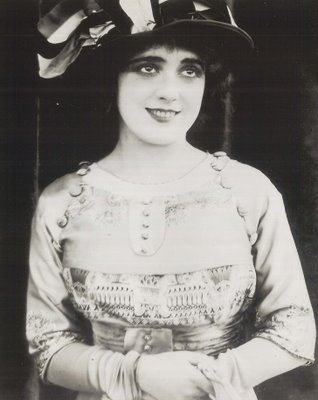

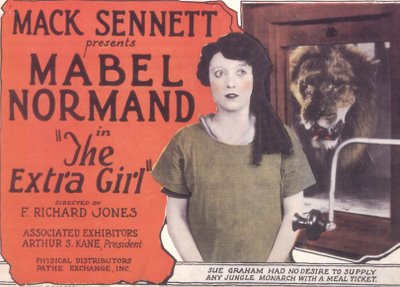
Mabel’s screen specialty was tomboys and live wires that flouted Victorian convention and enchanted audiences. She longed for something more elevated, but raucous comedy was how they liked her best, and in that category, she had no peer. Off-camera pursuits showed less caution. Wild parties enhanced with bootleg hootch and "nose candy" were vices of choice among Hollywoodites bored with the monotony of shooting formula stories over and again. Mabel’s myriad of health concerns were easiest forgotten with the help of a hip flask or narcotics fix, and who could blame her? She was well so little of the time --- why not take the fun where she could get it? Her link, if remote, with a series of movieland scandals was just appallingly bad luck, but the damage was considerable and lasting. First came the Roscoe Arbuckle mess. Mabel had co-starred with him, so that was enough to implicate her. The assignment of guilt by association became popular sport amongst yellow journalists of the day, and when director William Desmond Taylor was found dead with a bullet in his back on February 1, 1922, it looked as though the whole industry was going down for the count. Moralists incensed by the Arbuckle case noted Mabel as having been the last person to speak with Taylor before that fatal shot rang out --- inevitable letters and affectionately inscribed photos provided an even more damning coda to the investigation. Normand would be hounded by interrogators, both official and press appointed, for the rest of her short life --- all because she knew Taylor (albeit on a platonic basis) and just happened to be returning some books to him on the day of the murder. It seemed as though Mabel had taken up permanent residence behind the eight ball.
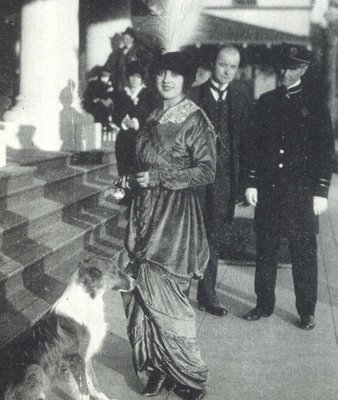
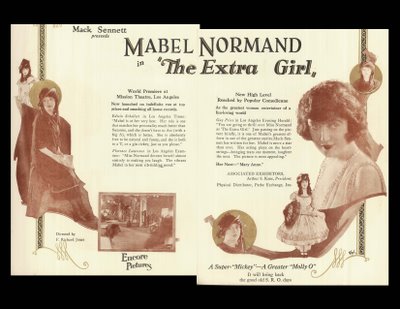
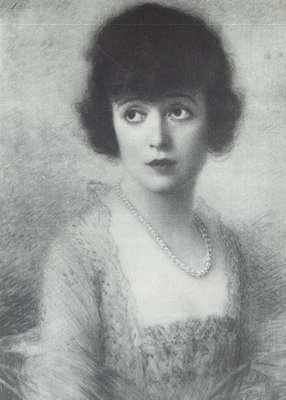
Always check those references before you hire. Mabel Normand didn’t, and consequently found herself with a chauffeur who’d recently sprung himself from a chain gang, effected a name change, and was now driving Mabel along Hollywood’s party circuit where alcohol and drugs often loosened tongues and shortened tempers. On one such occasion, Edna Purviance’s escort made some indelicate remarks about Mabel while in his cups and the chauffeur took after him with Normand’s gun. The shooting, while not fatal, would inspire a vigilant press to administer the worst beating yet to Mabel’s reputation, and prove once again what a violent and unpredictable town this could be. The natural attraction of the place was such that anyone, regardless of questionable character or background (often criminal), could insinuate him (or her) self into Hollywood social circles and prey upon its most prominent members. Roscoe Arbuckle, Clara Bow, and Mabel Normand were among silent headliners who were felled by ill-advised associations with such riff-raff. In the wake of relentless condemnation from a public who’d once idolized her, Normand tried the New York stage, but a weak voice wouldn’t carry beyond ten rows, much less expert pantomime better suited to a camera's scrutiny. Her final season in films was spent with Hal Roach's company, where an initial contract calling for eight features and eight shorts was scrapped after the first five entries due to worsening health and declining popularity. This was 1926-27. She’d gone into the hospital with bronchial pneumonia and lung complications. Her long suspected tuberculosis was confirmed around this time. Continued work of any sort was now out of the question. She summed it all up in a February 1927 diary entry, which simply read Who Cares? Her funeral three years later (at 37) was attended by virtually everyone who’d pioneered the silent film industry. Many of them no doubt pondered how things might have been if only they’d taken a little better care of Mabel.
